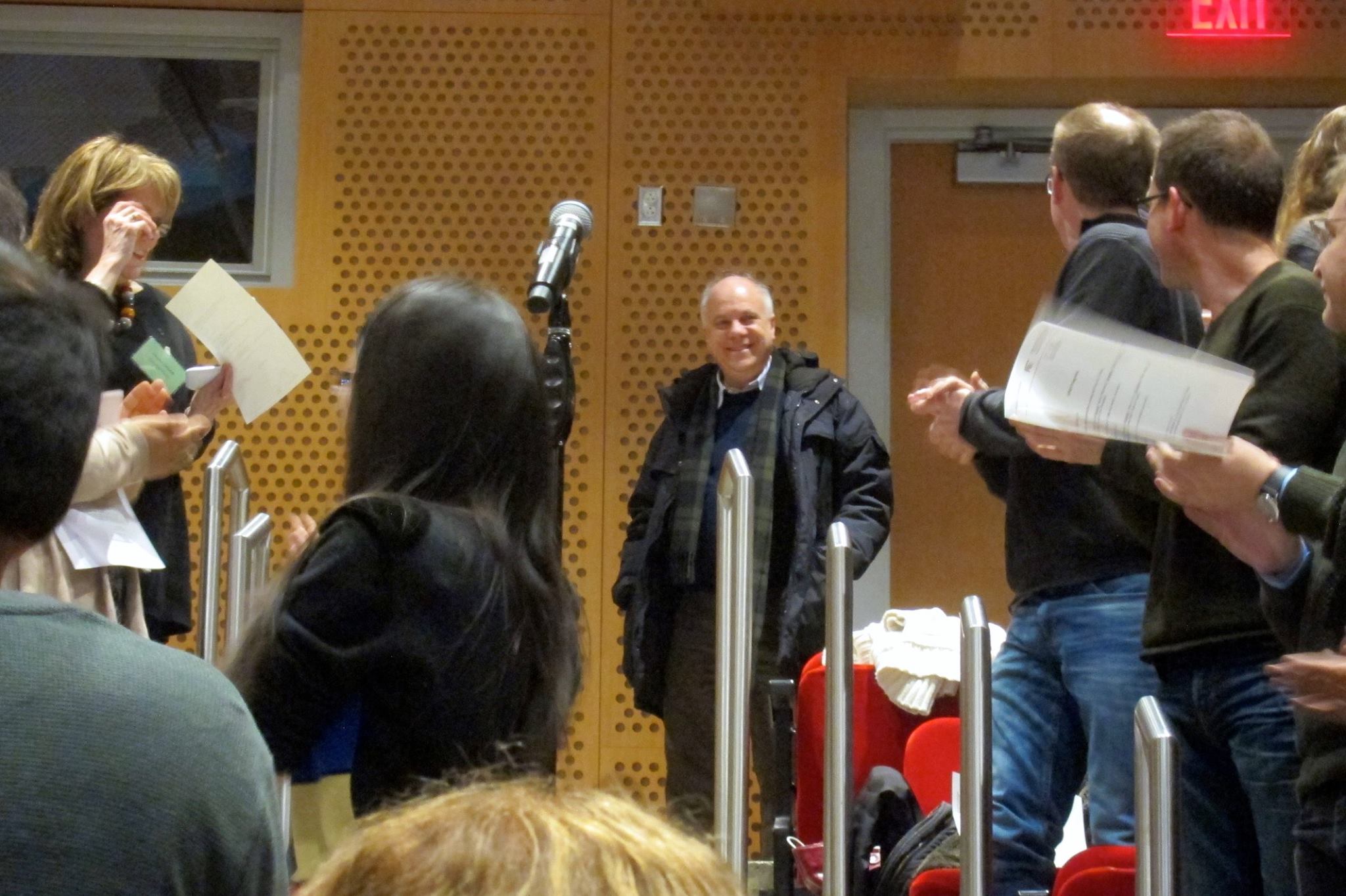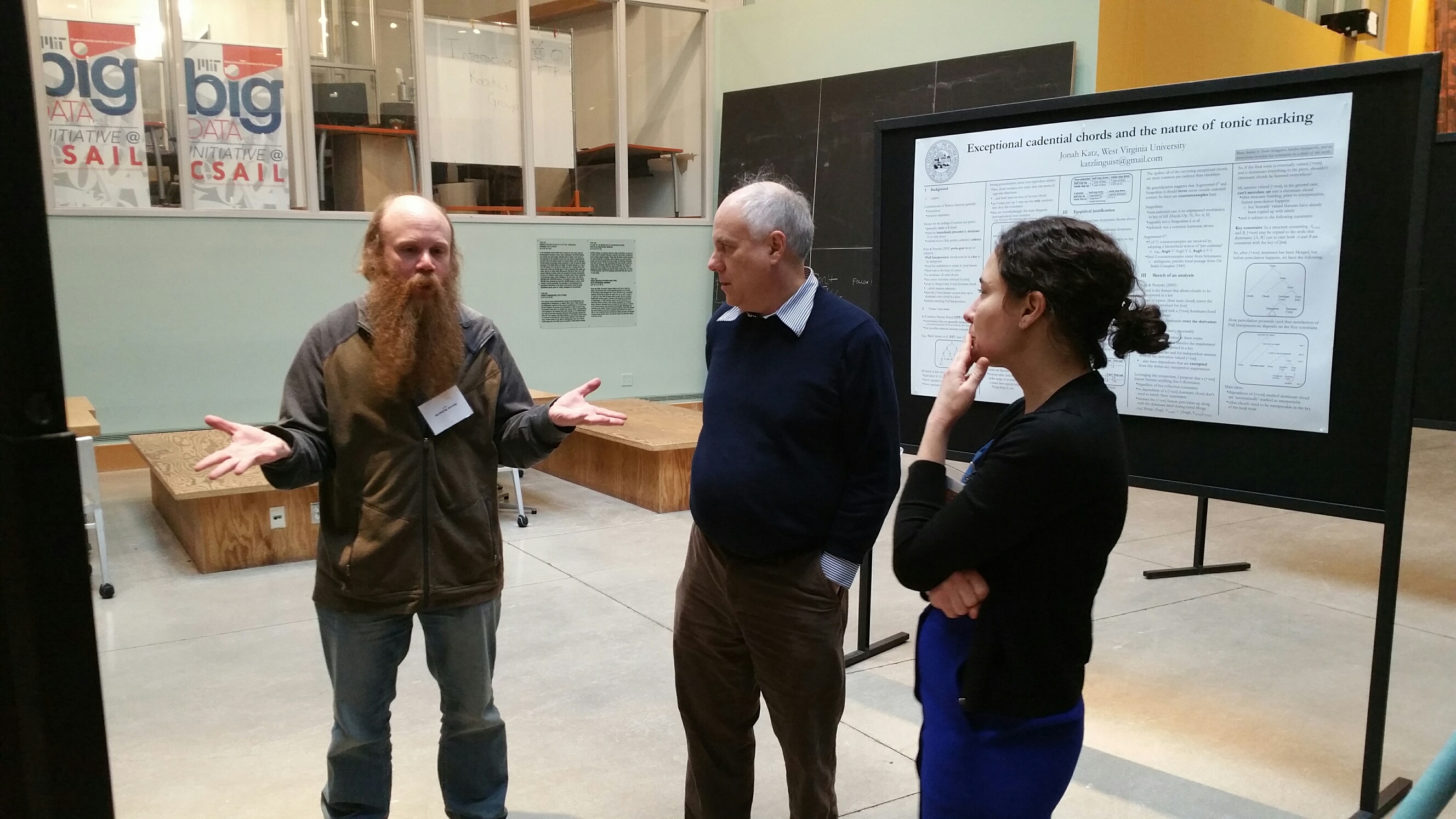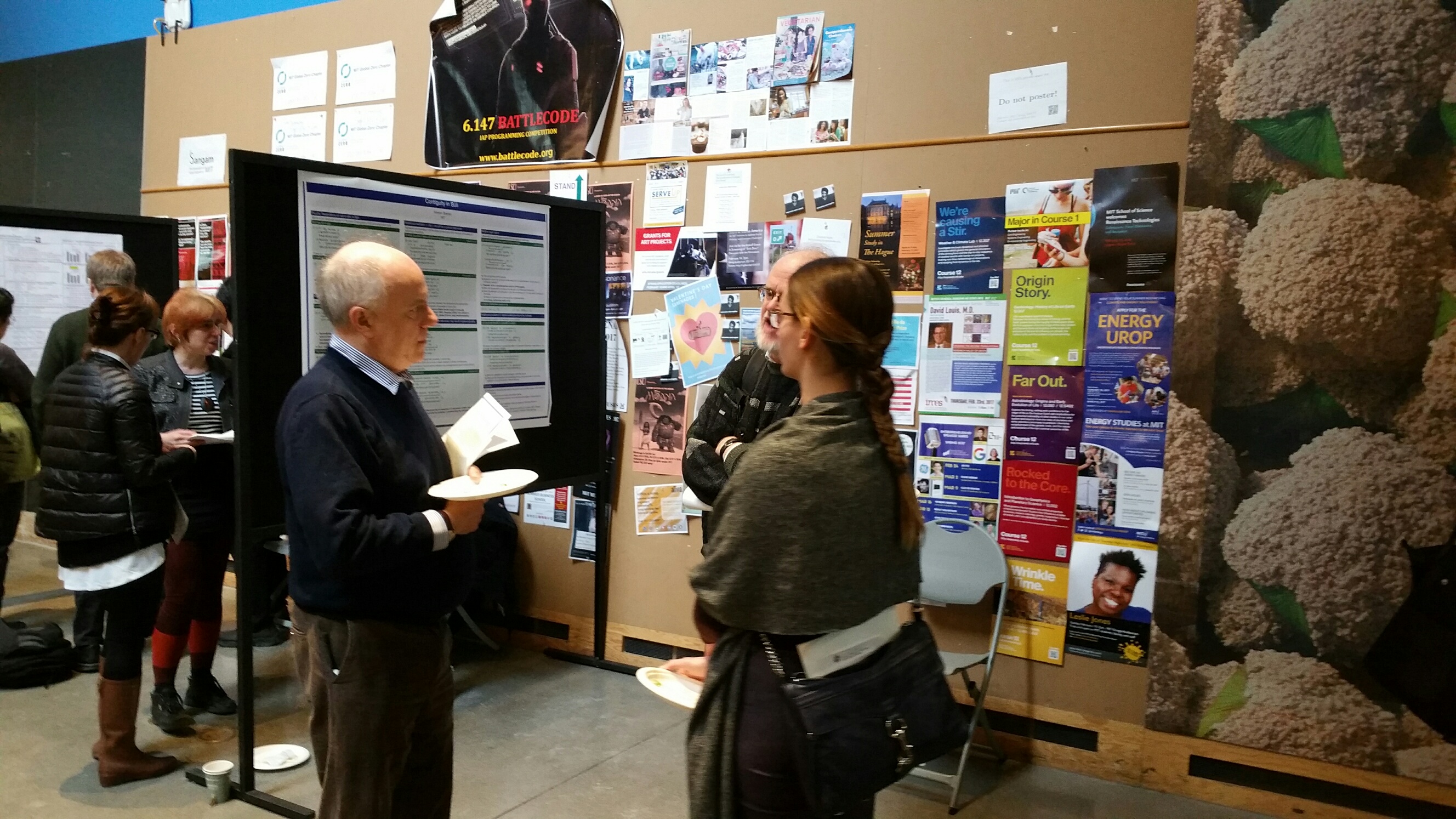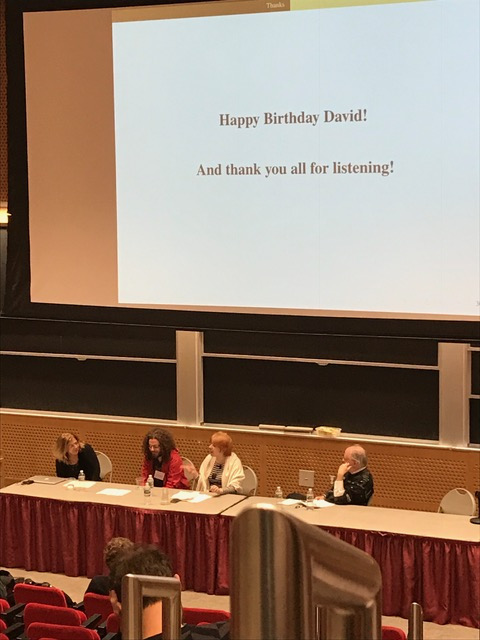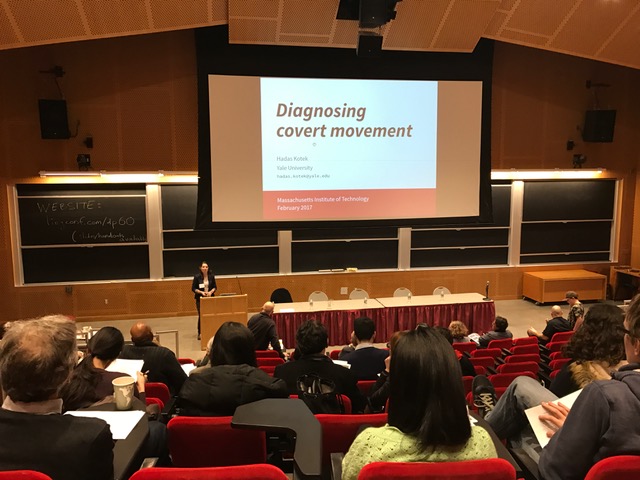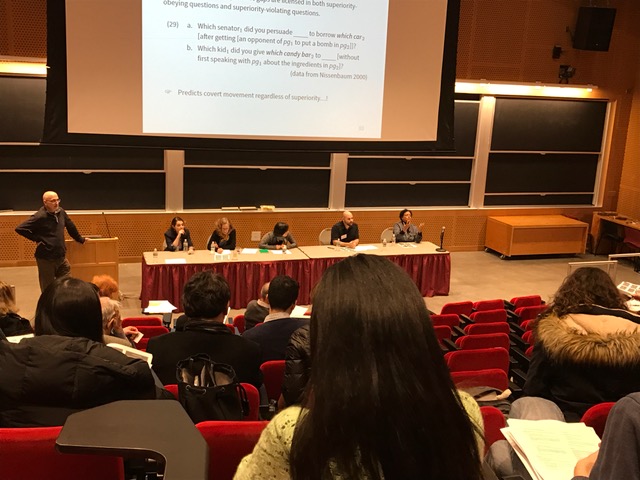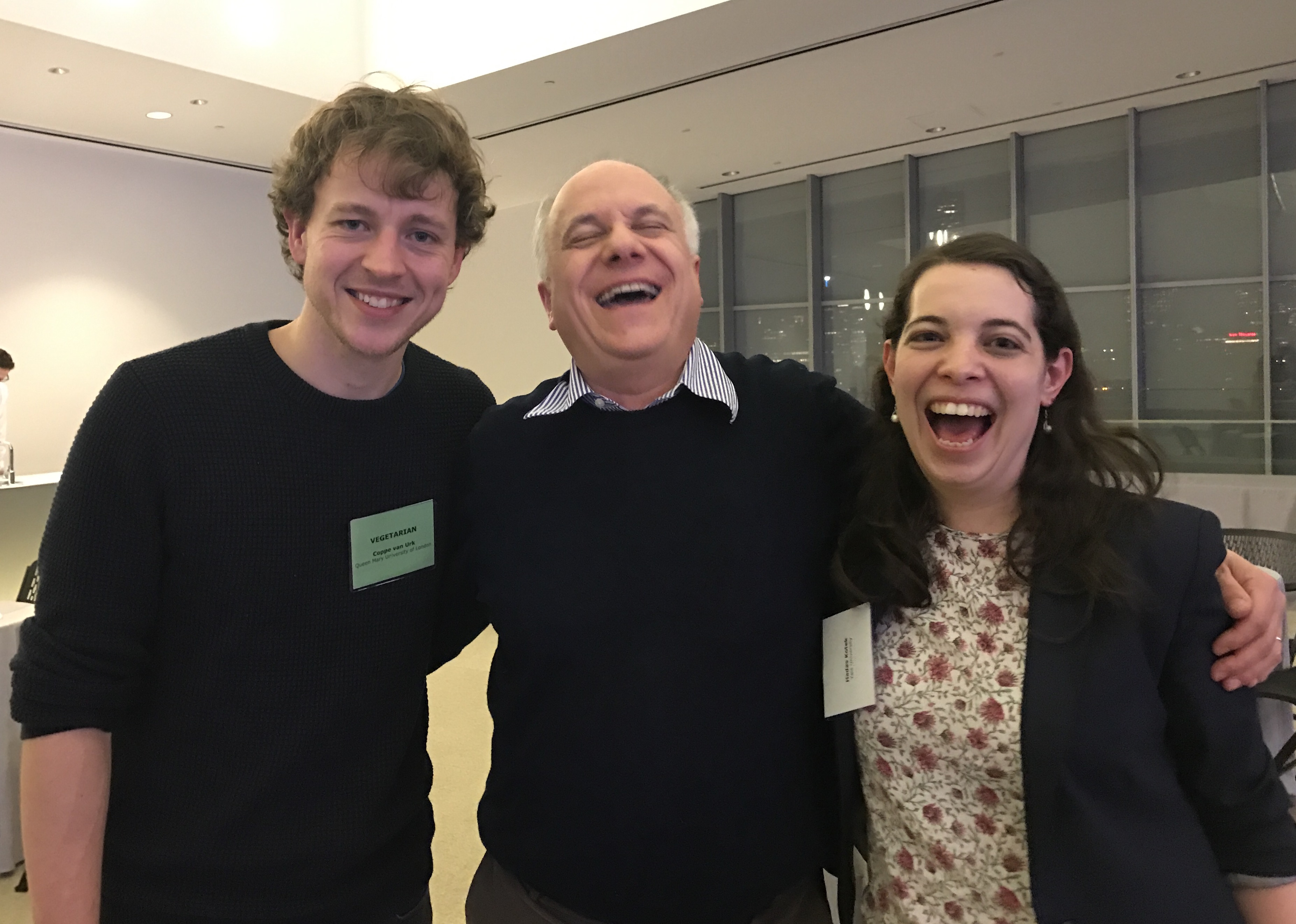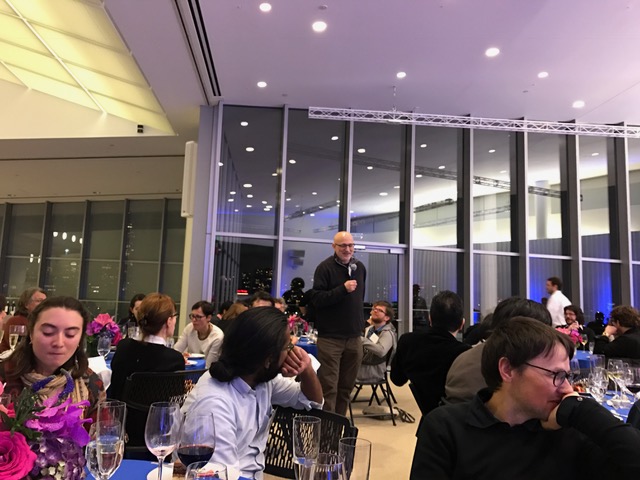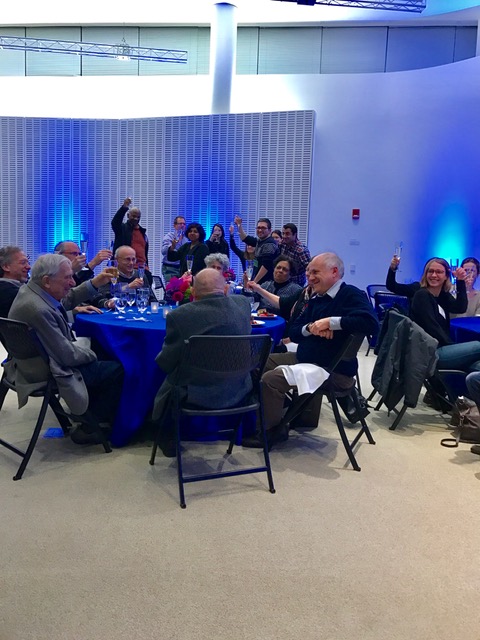24.956: Topics in Syntax
- Instructors: Noam Chomsky, Sabine Iatridou, David Pesetsky
- Time: Fridays 10am-1pm
- Room: 32-D461
This semester’s 24.956 will cover a number of loosely related topics.
- For the first five or six weeks, we will explore the syntactic behaviour of elements that are (apparently) totally or mostly devoid of meaning. We will have two foci: expletives and light verbs (such as English do of do-support fame). We will start with expletives. For the first class, please read and be prepared to hear about Amy Rose Deal’s 2009 paper in Syntax, entitled “The origin and content of expletives: evidence from selection”
- Then, for the next three or four weeks we will look into recent work by Chomsky and by researchers inspired by his recent papers, with a focus on labeling and related matters. These papers are not always easy, and have not been a focus in recent classes at MIT, so this should be new to most of you. In particular, the idea is to be well prepared for…
- … three classes by Noam. Here is an abstract for those classes:
Assume, as reasonably well-established, that UG is a species property, with I-languages as instantiations, each a combinatorial system CS yielding representations at the conceptual-intensional CI interface, and modes of externalization to sensorimotor systems. Assume also that both methodological and empirical considerations suggest that the operations of CS are quite simple, perhaps approaching a version of the Strong Minimalist Thesis SMT. Crucial open questions arise at every point in this outline, among them the status of externalization (is it ancillary, or does it feed CI) and the nature of the operations of CS, which, there is reason to believe, have not yet been properly formulated, a matter of particular interest that I would like to turn to after some critical review and discussion of the general picture.
- Following this, there will be three more classes, on a topic that we will choose together.
Sabine will be mostly in charge of part 1, David of parts 2 and 4 — and, well, you know who will be in charge of part 3
Requirements
Following we we think was a successful experiment in 24.956 last Spring, this class will not require a final paper or squib, on the grounds that if you’re interested in syntax, you are working on papers anyway. Instead, we will ask for :
- weekly submission of a comment or question+discussion based on that week’s reading
- co-presentation of one or two of the topics to be covered in parts 1, 2 or 4 of the class (details to be announced after class 1, partly depending on registration numbers)
If you find the class topics interesting and plan to attend, please register! Our hope is that people who attend will be active participants, and without the burden of a final research paper will find it more attractive to register— so they truly involve themselves in the class.
24.964: Topics in Phonology: The Phonetics and Phonology of Sentence Prosody
- Instructor: Edward Flemming
- Time: Wednesdays 10am-1pm
- Room: 32-D461
Different ways of pronouncing the same sentence can convey different meanings. The properties of pronunciation that modify meaning in this way are referred to as sentence prosody. There are three components of prosody: intonational melody, prominence, and phrasing. These components will be introduced through an overview of English prosody, then we will investigate the phonological representation and phonetic realization of each in more detail based on data from a variety of languages.
The goal of this course is to provide sufficient understanding of the phonetics and phonology of sentence prosody for participants to be able to engage in research on prosody in its own right, or in relation to other areas of linguistics (e.g. syntax, semantics/pragmatics, sentence processing).
Topics
- Overview of the prosody of English
- The Pierrehumbert/Beckman analysis of American English intonation
- ToBI transcription
- The phonetic implementation of intonation and phrasing
- Instrumental and experimental techniques
- Pitch tracking
- Resynthesis
- Intonational melody
- What are the contrastive units of intonation?
- Phonetic realization of melody
- Alignment of F0 and segments
- Prominence
- The variety of meaningful prominence distinctions
- Focus marking across languages
- Phonetic correlates of prominence
- The interaction of downstep and declination with prominence marking (Japanese, English)
- Phrasing
- Representation (prosodic hierarchical structure? boundaries?)
- The factors that determine prosodic phrasing
24.979: Topics in Semantics
- Instructors: Gennaro Chierchia & Irene Heim
- Time: Thursdays, 2-‐5PM
- Places: 32-‐D461 (MIT) & Emerson 106 (Harvard)
Indefinites: where do we stand?
This class will analyze the scope, quantificational, and anaphoric properties ofi ndefinites. We will start from the ‘classic DRT’ period and work our way to present days, through dynamic approaches and situation based ones.
- Week 1: Introduction to classic DRT for the uninitiated. Indefinites as variables, quantificational variability, adverbs of quantification, existential closure.
- Week 2: Developments of classical DRT. Diesing’s mapping hypothesis, aspects of the theory of generics
- Week 3: Basically, Heim (1982) and its developments. The birth of dynamic semantics: File Change Potentials.
- Week 4: “Standard” Dynamic Semantics of the 90’s. Indefinites as Dynamic Generalized Quantifiers, weak and strong readings of donkey pronouns, existential disclosure.
- Week 5: Situation based approaches and e-‐type anaphora
- Week 6: More on situation based approaches and e-‐type anaphora
- Week 7: The debate on long distance indefinites: Non canonical scope properties of indefinites.
Weak 8: Students’ presentations
- Weak 9: An interesting way to compare dynamic vs. e-‐type approaches: Plural anaphora.
- Week 10: Student presentations
- Week 11: An attempt at explaining Weak Crossover with dynamic semantics
- Week 12: More on Weak Crossover
- Week 13: Other Binding Theoretic issues (especially, principle B and principle C).
24.S95: Computation and Linguistic Theory
- Instructor: Roni Katzir
- Time: Tuesdays 10-1
- Room: 32-D461
In this class we will explore the connection between linguistic theory and models of learning, examining considerations of learning that have been central to work in theoretical linguistics over the years.
The first half of the class focuses on the learning challenge from a mathematical and computational perspective. We will discuss work by Gold, Angluin, and others showing that, on certain innocent-looking assumptions, the child faces insurmountable problems when faced with even basic learning tasks. We will further see that making the learning criterion probabilistic seems at first to make the learning task much easier but ultimately does not help. During this formal part of the course we will also discuss mathematical notions of complexity and look at how these provide a natural handle on the kind of generalization needed for learning, along with a tight connection between linguistic representations and the learning process.
In the second half of the semester we will look at experimental attempts to determine what can and cannot be learned both in humans and in other organisms, starting with the radical empiricist approach of behaviorists such as Watson and Skinner and moving to the instinct-centered approach of ethologists like Lorenz and Tinbergen. In this context we will discuss Chomsky’s review of Skinner, as well as other early generative work on learning. We will then turn to the familiar argument from the Poverty of Stimulus and examine its implications for the child in light of the conclusions arising from the first part of the semester. We will then consider results that show that humans are very good at extracting certain kinds of statistical regularities from unanalyzed data but very bad at learning other, seemingly similar patterns. We will end the semester by looking at what can be said about the division of labor between innateness and learning based on typological generalizations and at the nuanced view on this connection offered by evolutionary approaches to language change.
Requirements: attendance and participation; reading; and a final paper.
(Please, check back for updates!)
